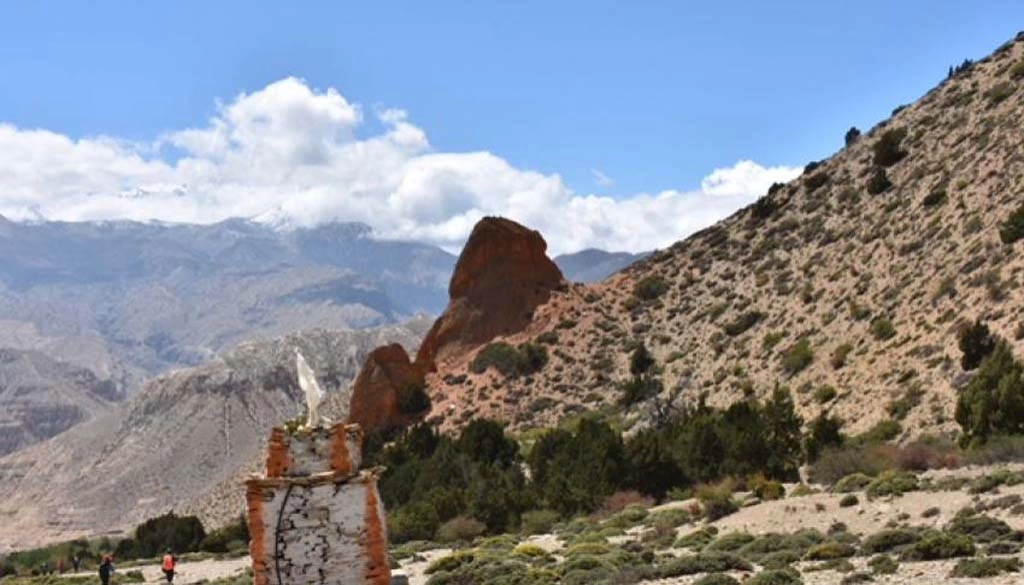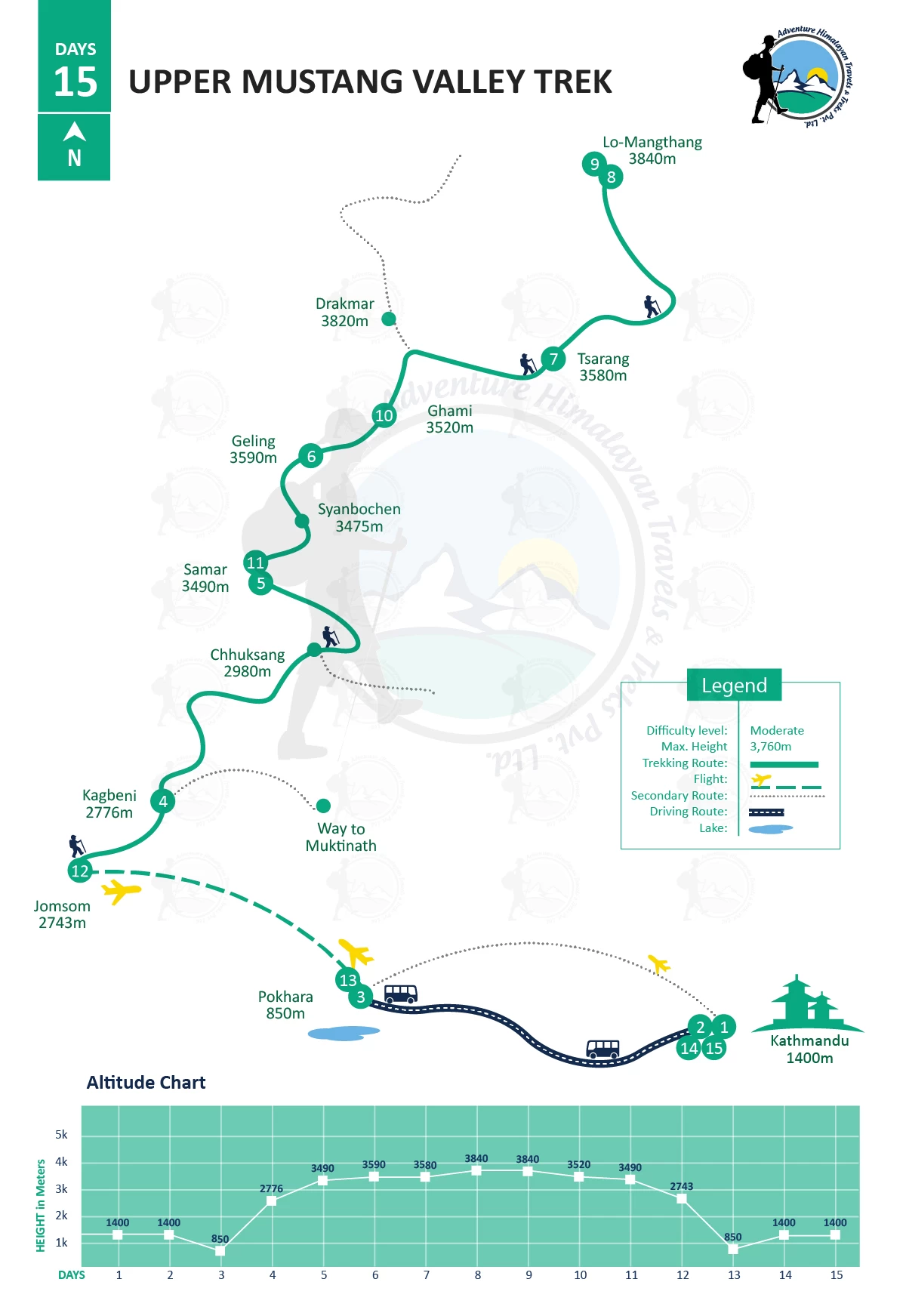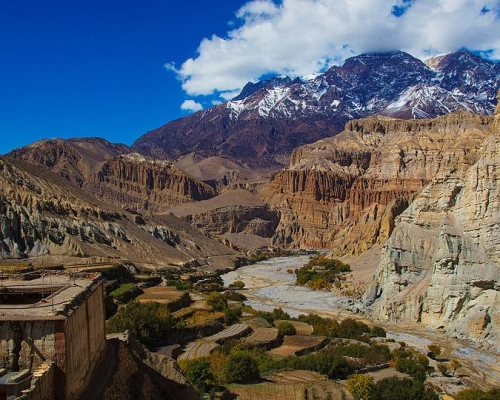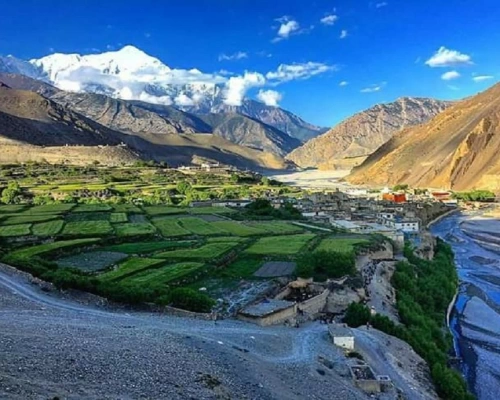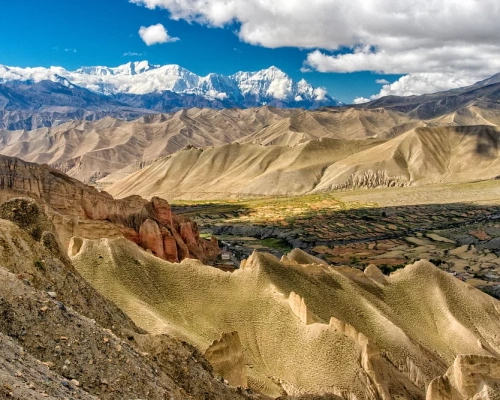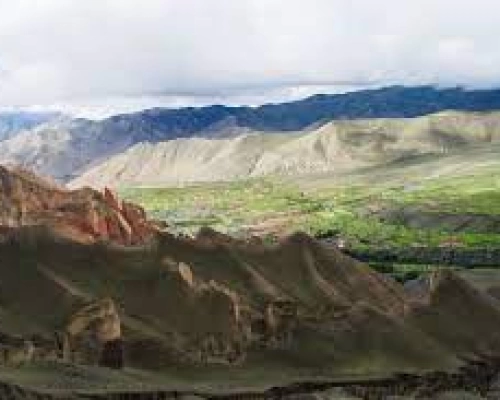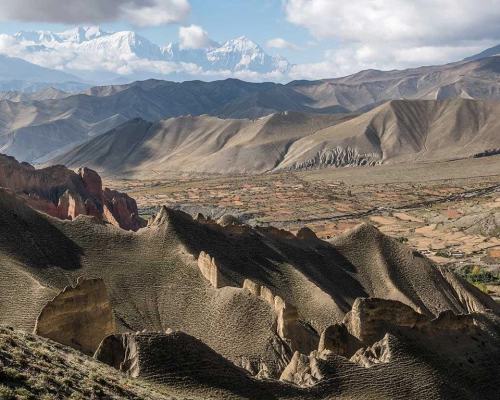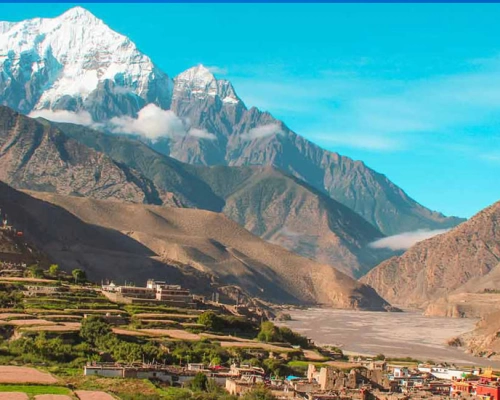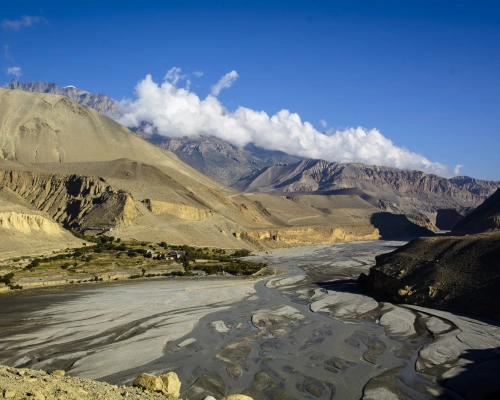The Upper Mustang Valley Trek is a balanced, both culturally and naturally immersive, Himalayan expedition in the north of the Annapurna Himalayas. It is an unforgettable journey to one of the restricted regions of Nepal, the Mustang Valley, founded in the 15th century by the Tibetan monarch. Often, the hike to the Upper Mustang Valley is also referred to as the Himalayan tour to “Mini Tibet,” featuring well-conserved Tibetan culture, centuries-old monasteries, and diverse Himalayan landscapes, making it all the way through the splendid Kali Gandaki Gorge and experiencing first-hand desert-like terrain, deep gorges, and high-altitude passes.
The odyssey to the Upper Mustang Valley is a must to have insider insight into Nepal’s remote beauty and unspoiled culture, traditions, and customs hidden behind the majestic Himalayas of the seventh, eighth, and tenth highest peak in the world, Mt. Dhaulagiri (8,167m), Mt. Manaslu (8,163m), and Mt. Annapurna (8,091 m), that may have long been from several other more popular trekking routes in the Nepalese Himalayas such as the Everest Base Camp and Kala Patthar Trek, Annapurna Circuit Voyage, Annapurna Base Camp Hike, and others.
Trekking to the culturally abundant Upper Mustang is known as an ultimate opportunity to venture deep into the forbidden kingdom of Nepal, which remained isolated, even being incorporated into Nepal as a whole nation. Although visitors can now explore the valley, the Mustang trekking region is still a highly restricted area bordering the Tibetan plateau, requiring a special permit to enter that allows only a limited number of trekkers, travelers, and explorers to traverse the globe.
Beginning from Jomsom, the Himalayan trip that takes you through the Kali Gandaki Gorge to the ancient walled city of Lo Manthang, the Upper Mustang Trek is a journey into a timeless land where nature and culture merge beautifully to grant every sort of adventurer, be it the simple nature lovers or daredevil mountaineers, climbers, photographers, or high Himalayan expeditors, a memorable moment of their lifetime.
What makes the jaunting to Upper Mustang Valley a unique Himalayan Trip?
Unlike most of the popular trekking routes in the Himalayan region of Nepal, such as the Everest, Annapurna, and Langtang, in order to undertake the Upper Mustang Valley trek in the Mustang region, you would have to meet specific travel and trek conditions, including the compulsory hire of government-registered guides, limited stays within the region, and supervision by any of the reputed trekking agencies or organizers.
Besides these legal regulations, a journey to Upper Mustang Valley offers a rare combination of cultural immersion, historical exploration, out-of-this-world natural beauty, and a demanding yet rewarding experience, making it a vastly unique and compelling destination in the Himalayas to expect:
An outstanding geographical and cultural isolation
The Upper Mustang Valley is nestled in the rain shadow of the Annapurna and Dhaulagiri ranges, resulting in an arid climatic condition in a remote location close to the border with Tibet, known for its distinctive topography with red cliffs, deep gorges, and panoramic vistas, which until 1992 was a restricted area completely closed to foreigners.
Even today, access to Upper Mustang Valley is limited and controlled with essential special permits that have helped maintain the region's pristine condition with the limited number of trekkers as one of the last places in Nepal where the ancient Tibetan culture and tradition is still largely intact ensuring a more exclusive and unspoiled environment.
The rich Tibetan cultural encounter on the way to the Upper Mustang
The journey to Upper Mustang, a cultural and natural gem secluded behind the Annapurna and Dhaulagiri ranges, offers profound engrossment in Tibetan culture, as the area has historically been part of the Tibetan cultural landscape that has been preserved and kept secret for centuries and showcases a strong Tibetan influence.
While the prime destination itself, Upper Mustang Valley, consists of numerous monasteries such as Lo Gekar, Jampa, Thubchen, Chode, and Choprang, en route, you would also get to take blessings, passing by several other notable Mani Walls and Gompas adorned with colorful prayer flags.
Further, depending on your time of visit to the Upper Mustang, you can get an opportunity to be part of the biggest Tiji festival and, lastly, make it to the traditional villages of Ghami and Lo Manthang, which serve as the living museum of Tibetan culture, by passing through the sacred sites and landscapes such as Kagbeni and Holy Caves in Chhosar based on the route you have chosen to traverse the Upper Mustang Valley.
Hence, this adventurous rambling to the Upper Mustang Valley is an incredible cultural pilgrimage into the heart of Tibetan civilization, from the holy shrines to vibrant festivals to humble village life, offering an insider insight into a world where the past and present coexist harmoniously.
The Stunning Trans-Himalayan Landscapes
The Upper Mustang Trek features some of the most dramatic cliffs, colorful rock formations, ancient caves, and arid landscapes, in stark contrast to the lush green hills typically associated with Nepal. The terrain you will pass through includes deep canyons and vast desert-like plains, particularly in the Chele and Ghami areas.
The rocks display a vibrant palette of colors due to the area’s unique mineral composition, while the ancient cave dwellings date back thousands of years and are scattered throughout the cliffs. However, despite the region's arid nature, the memorable voyage to Upper Mustang lets you walk amidst and side by side with the towering snowy mountains when combined with the region's rich cultural heritage, making this Upper Mustang Valley hike an unforgettable experience.
Marvelously Adventurous Trekking Experience
The exploration route to the Upper Mustang Valley is less frequented compared to other more pious trekking regions in Nepal, which still have a mix of high-altitude experiences, dry landscapes, and strong winds, making it a challenging and rewarding experience at the same time as a true sense of adventure and solitude.
For several days, you would be walking 3,000 meters above sea level, reaching even around 4,200 meters (13,780 feet). You might have to push yourself beyond your limits and expectations, presenting trekkers and travelers with a unique set of challenges, especially in terms of acclimatization and physical endurance, during the Trans-Himalayan expedition to the Upper Mustang Valley.
The trails in the Upper Himalayas are usually rugged with steep ascents and descents in competitively harsh weather conditions with strong afternoon winds and significant variations between day and night, which demand a good level of physical fitness and some preparation.
Making through these difficulties en route to Upper Mustang Valley is extremely rewarding. The adventurous allure stems from a combination of remote location, unique cultural experience, and breathtaking landscapes in the rain shadow area of the Nepalese Himalayas, which stands out as a fantastic monsoon trek destination to relish on summer holidays for everlasting memories and a sense of achievement.
A rare opportunity to discover the biodiversity of the Mustang region
Despite the bare appearance of the Mustang region, it supports a variety of plant and animal life, passing through some of the most beautiful scenery, including juniper trees, buckthorns, and a wide range of alpine wildflowers, along with the spotting of elusive blue sheep, Himalayan griffons, and even snow leopards.
Therefore, the Upper Mustang Trek is not only a brilliant adventure through rugged and mystical landscapes but also an ultimate chance to reveal the unique biodiversity of the Mustang region, harboring a surprising variety of flora and fauna adapted to its high altitude and dry environment.
Why is the 15-day itinerary to the Upper Mustang Valley the best route to explore the Mustang region?
The 15-day itinerary to tour the Upper Mustang Valley starts from Kathmandu with a tourist bus joyous ride to Pokhara, following the white water bodies of the Trishuli River initially and the Marsyangdi River later on, then Pokhara and Jomsom on a super mountain flight to Jomsom, the administrative center of Mustang with magical views of the Annapurna ranges, including Fishtail, Annapurna South, Annapurna II, Dhaulagiri II, and many other peaks.
This trekking route to the Upper Mustang in the Mustang region thereafter takes you through several historical and cultural towns such as Kagbeni, Samar, and Tsarang, including the kingdom of Upper Mustang Lo Manthang, following the deepest gorge in the world, Kali Gandaki, back and forth watched over by the dynasty mountain ranges such as Mt. Dhaulagiri, Mt. Nilgiri, Damodhar Peak, and several other unnamed snow-capped peaks of Mustang.
This alpine traverse involves apple tasting, cultural discovery, and nature connection, covering approximately 200 km. Therefore, therefore is considered the best route to visit the Upper Mustang Valley, providing comprehensive coverage of the region, ample acclimatization, chances for cultural immersion, and a feasible fully appreciated appreciation of never-before-seen landscapes, historical sites, and local traditions.
Further, the 15-day itinerary can be customized as per the needs and preferences of trekkers and travelers at Adventure Himalayan Travels and Treks, ensuring a richer and more fulfilling experience. Contact us for an amazing Himalayan journey, whether you are seeking a longer-term high Himalayan expedition such as the Tilicho Lake Thorong La Pass Trek (17 days), the Kanchenjunga North and South Voyage (23 days), or a short-day hike to Ghorepani Poon Hill and the Langtang Valley Pilgrimage, including the odyssey to the Upper Mustang Valley.
Group Cost for 15 Day Trek to the Upper Mustang Valley
As one of the reputed locally based leading trekking agencies in Nepal, we at Adventure Himalayan Travels and Treks are offering a group discounted price to trek the Upper Mustang Valley that includes all permits and trekking logistics involving accommodation, meals, guides, and porter fees, along with travel insurance for all the Nepalese staff.
This 15-day package to the Upper Mustang can cost you anywhere between USD 2023 per person and USD 1,775 based on the trek group size, season of travel, and service chosen. We excel at creating the best suitable Himalayan journey for the most affordable budget of our clients which for now is:
- USD 2,030 for 1 pax
- USD 1,955 for 2-3 pax
- USD 1,875 for 4-6 pax
- USD 1,775 for 7-10 pax
If you are a group of more than 10 travelers and trekkers, you will be delighted to have come across our special discounted trekking package to the Upper Mustang.
